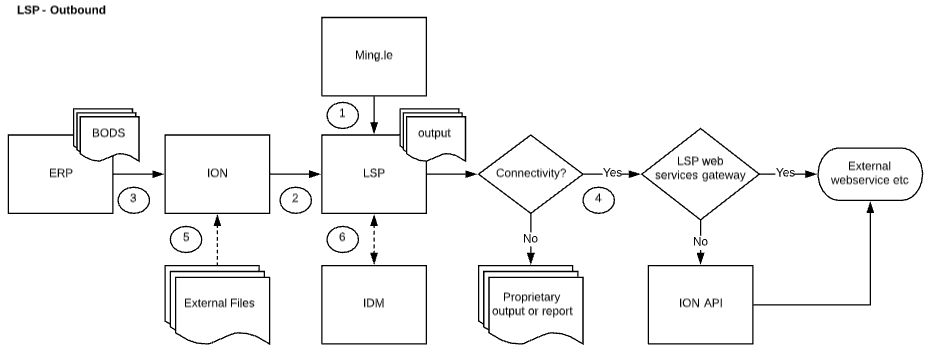Overview
This chapter outlines the touchpoints between LSP and other Infor products and provides details for communication to third parties, such as governments and government agencies.
The Infor Localization Services Platform (LSP) provides different services to cater for country-specific government requirements. LSP provides these features and functions:
- Generates the proprietary document in an electronic format
- Allows ERPs to integrate to LSP through BODs to generate the required document that conforms to government-provided schemas
- Provides inquiry windows and key values that help users analyze data and check data against their system of record (SOR)
- Provides lists of documents that have been processed and document statuses
- Allows users to maintain master data, set up default codes, and enable mapping of SOR codes to government-provided codes that are required in the output file
- Communicates with third party institutions, such as governments and government agencies either through the LSP Web Services Gateway or by harnessing InforOS functionality
- Stores legal documents using IDM
Each function (services) uses some or all of these capabilities and are described in Country configurations.
This diagram shows the main outbound route for creating a submission, in the appropriate proprietary format:

These numbered items are covered in these references:
- Connect LSP so it is invoked from Infor OS Portal or Infor Ming.le.
- Connect ION to LSP so that BODs can flow in between.
- Connect the ERP to ION so that BODs can flow in between.
- Connect LSP to the LSP Web Services Gateway or ION API so that submissions are forwarded to third-party entities such as governments, government agencies, etc.
- Import files that originate outside of ERP, InforOS, and LSP.
- Connect to the IDM product for document management.
This diagram shows the main routes for receiving an electronic file (inbound):

These numbered items are covered in these references:
- Connect LSP to ION API so that communications from third-party entities such as governments, government agencies, etc. are processed within LSP.
- Connect ION to LSP so that BODs can flow in between.
- Connect ION to ERP so that BODs can flow in between.
- Connect to the IDM product for document management.